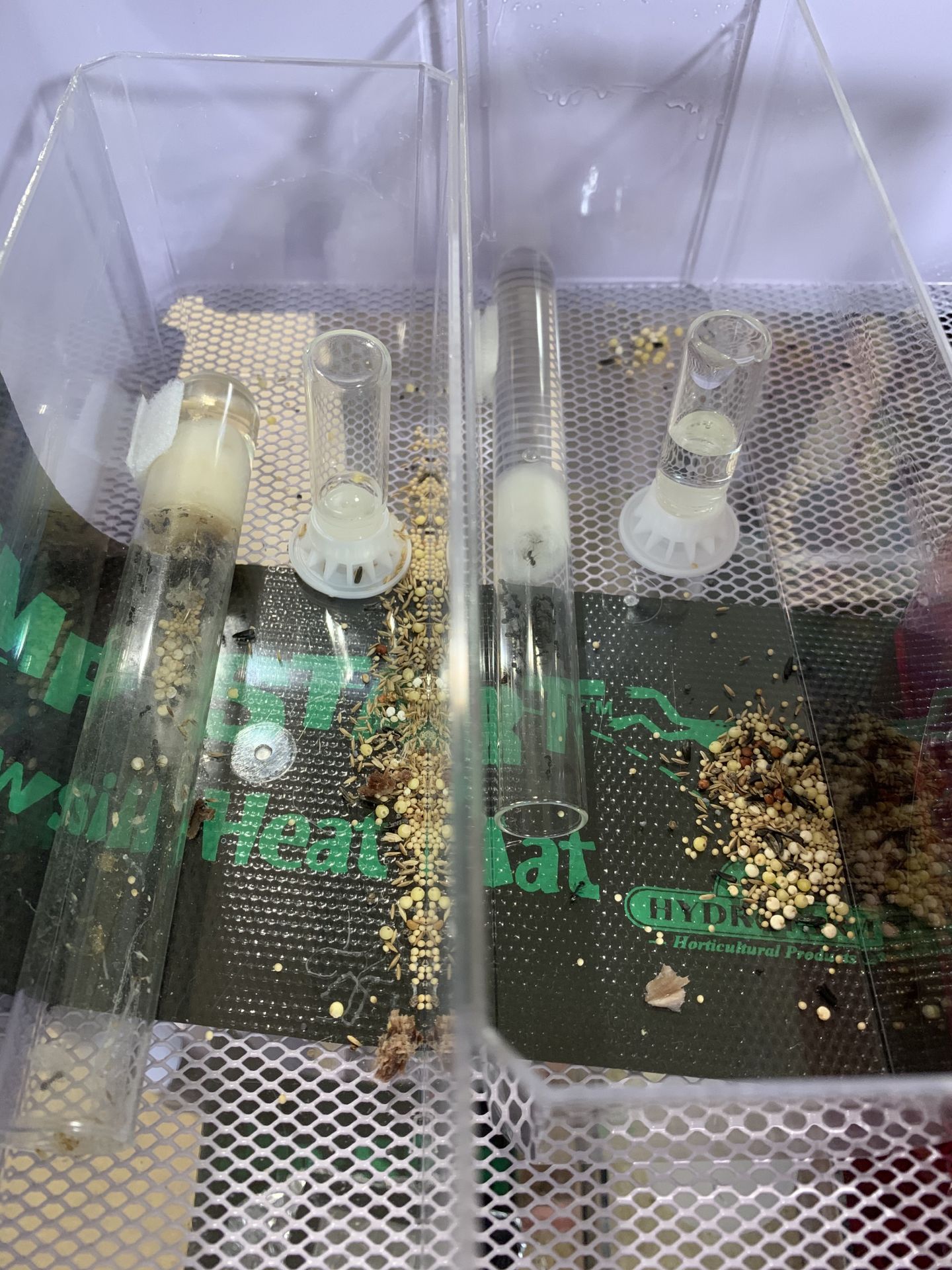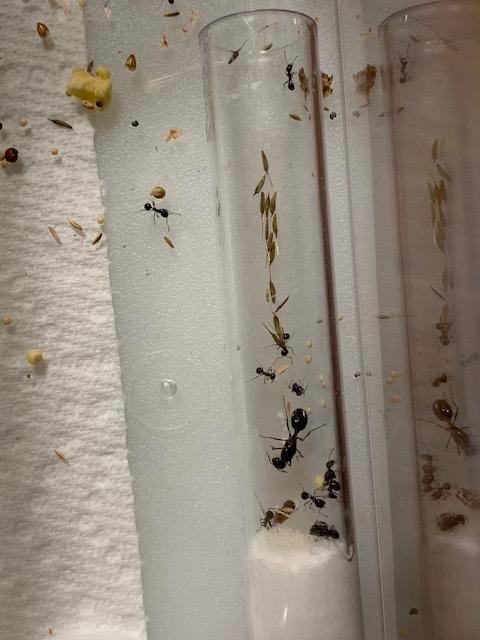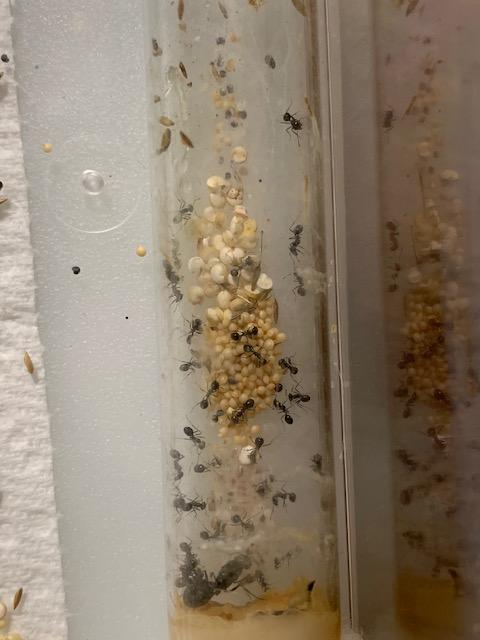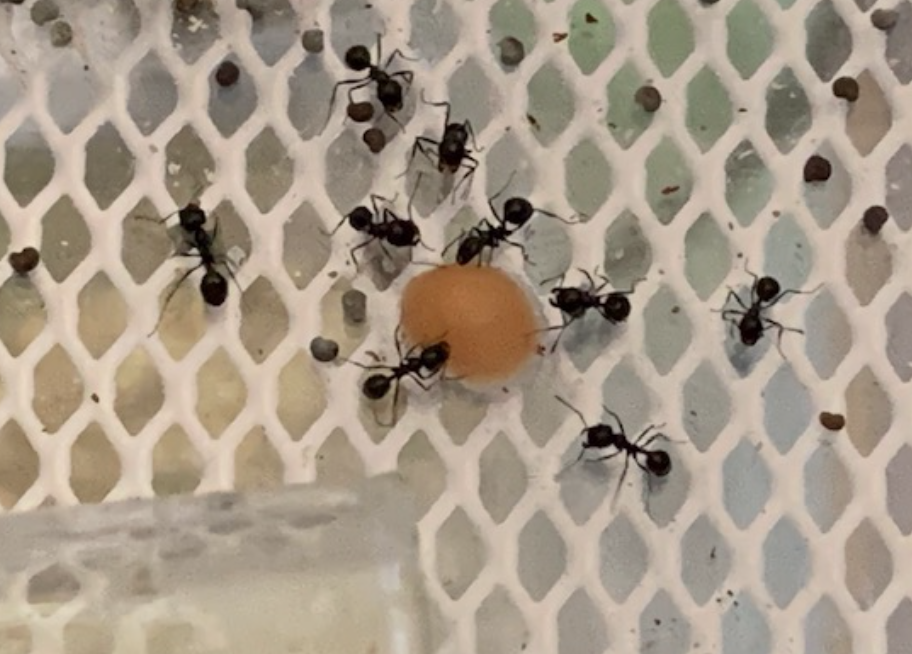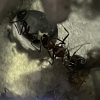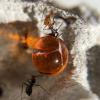Veromessors and Novomessors, oh my. (This opening entry updated several times, most recently July 2023.)
July 2023: Added a V. pergandei caresheet on page 7
October 2020: Added Novomessor cockerelli on page 5
May 2020: Added Veromessor andrei on page 3
I became interested in Veromessor pergandei because I had been looking for ants that could be kept safely in a classroom:
- relatively large and easy to see and not escape-prone,
- easy to care for,
- not totally carnivorous and able to eat something other than freshly killed bugs (in this case they are harvester ants and collect seeds),
- active diurnally so it's not boring during the day,
- doesn't require hibernation/diapause/brumination (since school years go right through the middle of winter), and
- without nasty stinging or acid spraying.
- Oh, and majors.
V. pergandei fits the bill pretty well. I wound up changing my mind about letting the school keep ant colonies with queens (after an incident with a house plant that let's just say didn't come out well), but I'm still intending to take in colonies to show to kids... just not having anyone but me take care of an actual queen.
And why Novomessor cockerelli?
A while ago I decided I didn't want Novomessors because they aren't as granivorous as Veromessors. But I had forgotten about this article:
https://pubmed.ncbi....h.gov/28311843/
- "Early in the morning, before P. barbatus' activity period, N. cockerelli fills the nest entrances of P. barbatus with sand. ... Nest-plugging shifts the typical daily sequence of P. barbatus activities, including the onset of foraging, forward towards midday, when high temperatures force the colony back inside the nest"
How cool is that?
UPDATES
So I'm fond of Veromessor pergandei; they are easy to care for because
- You can just feed them seeds and don't even HAVE TO provide sugar water (though they do like it).
- They don't seem very photophobic. At least once a queen has workers, constant exposure to light doesn't seem to bother the colony. They have done well in test tubes in an outworld with no cover; they have done well in a Fallen Fortress with no red filter or opaque covering.
- They do like heat but don't seem to NEED it badly (they did not go on spree of eating brood, unlike my fraggles)
- They can move fast but not as blazingly fast as medium/large Camponotus
- Possible minus: They grow explosively fast in the 2nd year. Oh. my. gosh. I learned that at max size in nature, they get 650 new workers EVERY DAY, and now I see this is the direction we are heading.
FOOD - based on my first Veromessor pergandei colony. Not including Derpymessor (VP2) because they had real issues
- All the Veros I've had seem to appreciate freshly collected dandelion seed. The fluff can confuse them though.
- Fresh organic poppy seeds from the spice aisle of the supermarket
- Organic quinoa seeds
- Organic amaranth seeds
- Hemp hearts seem to be of some interest
- Ground up flax seed seems to be of interest
- Everyone else raves about untreated Kentucky blue grass seed so get some
- Fruit flies
- Cut up mealworms
- Cut up flies
- Cooked lamb, cooked shrimp
- Gerber chicken baby food
--------
I believe both (VP1, VP2) queens were caught in southern California sometime in 2019, but in different locations.
2019.9.9 received Veromessor pergandei colony 1 (VP1). Queen and between 7-9 nanitics in a test tube. Sorry, I did not go and catch the queen myself.
2019.9.10 Test tube in a plastic box outworld. Did a little experiment. Gave all my colonies tiny mealworms. While it was healthy and kicking, the nanitics in the tube ignored the mealworm. There was just one gal attacking the mealworm in the outworld, with occasional help from a second ant who was more interested in finding a way out of the outworld. Finally super nanitic got it partially dead and dragged it back, and suddenly the other ants got interested after all her hard work. I later read that harvester ants don't lay down a trail for others to follow, as their food is unlikely to be in a clump that requires a lot of cooperation. Could explain the solo nature of the takedown.
I had ordered a heating cable but it hadn't arrived yet.
2019.9.13 Discovered they are better at climbing plastic than I thought. Lost 1-2 of the more exploratory nanitics. I used Vaseline to create a barrier in the outworld.
2019.9.26 One nanitic hauling in dandelion seeds to the test tube while another was pushing dandelion seeds out of the test tube as trash. The fluff is treated as trash while the seed was treated as food, so they were confused. Eventually they started cutting the fluff off, but even the stem on the seed was enough to cause some confusion. Also funny incident with an ant hauling seed into the tube: a bit of fluff blocked her from backing in correctly and she kept missing the entrance. She would think she was going into the tube and realize she wasn't, back up, try again, get bumped off-trajectory by the fluff, fail to go into the tube, back up, try again, repeat. I finally picked up the fluff.
Edited by OhNoNotAgain, July 2 2023 - 7:32 PM.



